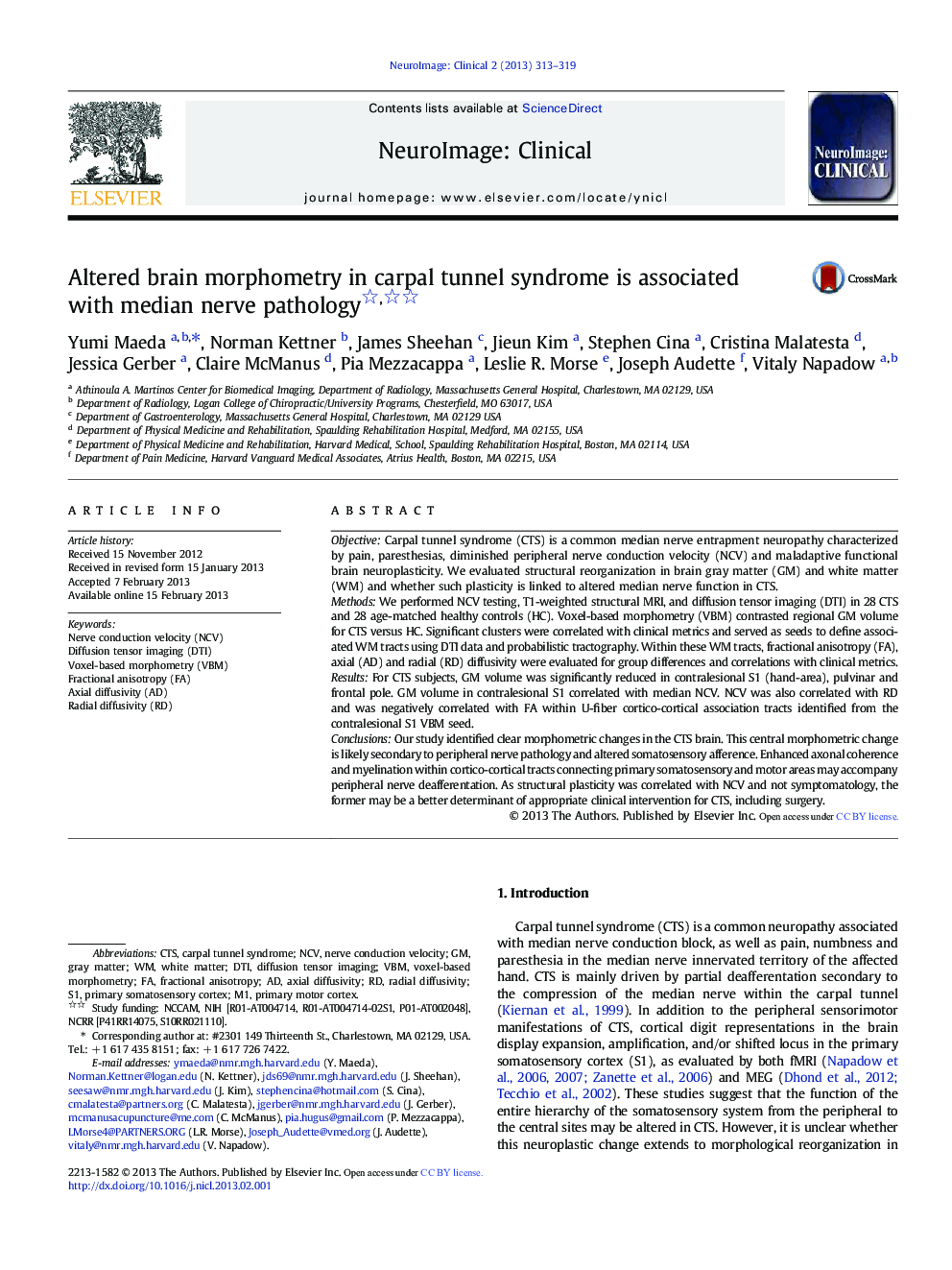| Article ID | Journal | Published Year | Pages | File Type |
|---|---|---|---|---|
| 3075516 | NeuroImage: Clinical | 2013 | 7 Pages |
ObjectiveCarpal tunnel syndrome (CTS) is a common median nerve entrapment neuropathy characterized by pain, paresthesias, diminished peripheral nerve conduction velocity (NCV) and maladaptive functional brain neuroplasticity. We evaluated structural reorganization in brain gray matter (GM) and white matter (WM) and whether such plasticity is linked to altered median nerve function in CTS.MethodsWe performed NCV testing, T1-weighted structural MRI, and diffusion tensor imaging (DTI) in 28 CTS and 28 age-matched healthy controls (HC). Voxel-based morphometry (VBM) contrasted regional GM volume for CTS versus HC. Significant clusters were correlated with clinical metrics and served as seeds to define associated WM tracts using DTI data and probabilistic tractography. Within these WM tracts, fractional anisotropy (FA), axial (AD) and radial (RD) diffusivity were evaluated for group differences and correlations with clinical metrics.ResultsFor CTS subjects, GM volume was significantly reduced in contralesional S1 (hand-area), pulvinar and frontal pole. GM volume in contralesional S1 correlated with median NCV. NCV was also correlated with RD and was negatively correlated with FA within U-fiber cortico-cortical association tracts identified from the contralesional S1 VBM seed.ConclusionsOur study identified clear morphometric changes in the CTS brain. This central morphometric change is likely secondary to peripheral nerve pathology and altered somatosensory afference. Enhanced axonal coherence and myelination within cortico-cortical tracts connecting primary somatosensory and motor areas may accompany peripheral nerve deafferentation. As structural plasticity was correlated with NCV and not symptomatology, the former may be a better determinant of appropriate clinical intervention for CTS, including surgery.
► CTS demonstrated reduced GM volume in S1, pulvinar, and frontal pole. ► GM volume in S1 was significantly correlated with median nerve conduction velocity. ► Median nerve velocity was linked to WM microstructure in tracts connected to S1.
